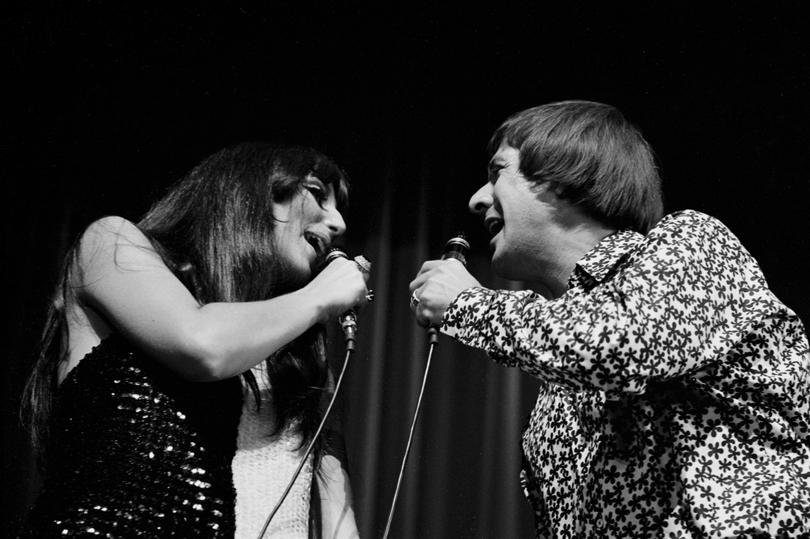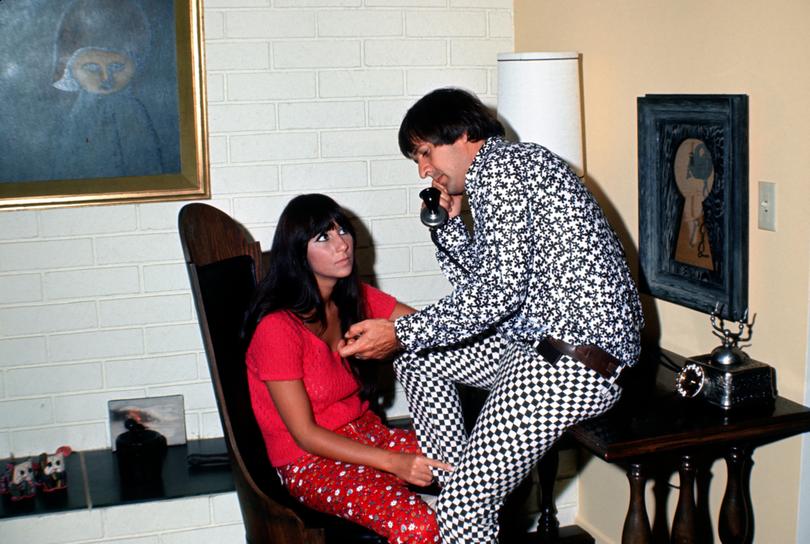THE WASHINGTON POST: Cher, ever the chameleon, shows her true colours

Back in the 1970s, I used to stare at Sonny and Cher whenever they popped up on my TV screen - mainly because, to my preadolescent eye, they didn’t add up. She was tall and sun-kissed and lanky, with a cascade of raven hair and an air of amused detachment. He was tiny, with gold chains and broad lapels and a walrus mustache and, oozing from every quarter, the need to please. If he’d had a tail, it would have been wagging. She sang, and he mostly didn’t. He grinned, and she mostly didn’t. At the end of every episode, as if to assure us of their marital bona fides, they lofted their blonde daughter toward the camera. In their own way, Sonny and Cher were as unlikely a TV couple as Lucy and Desi and maybe just as doomed, because co-starring exerts the kind of pressure that matrimony doesn’t. Especially when the woman is more indispensable to the act than the man is.
That the woman may take a while to grasp her centrality becomes the de facto narrative arc of “Cher,” the first instalment in a projected two-part memoir that, judging from press accounts, has had nearly as many ghostwriters as the King James Bible. Cher herself, 78, claims not to have read the final version, but her hearteningly profane voice still emerges and, with it, the question of why she’s writing a memoir in the first place.
Surely, of all the pop divas in the past half-century, she has been the least concerned with her own reputation. Indeed, with every unbuttoned interview she gives, with every costume and wig she changes into, with every visit she pays to the plastic surgeon, she has been protesting the very idea of fixing herself in history. Catch her if you can.
Sign up to The Nightly's newsletters.
Get the first look at the digital newspaper, curated daily stories and breaking headlines delivered to your inbox.
By continuing you agree to our Terms and Privacy Policy.Then, too, there’s the question of which Cher we’ll be reading about. I have lived through at least four or five, culminating most recently in “Mamma Mia! Here We Go Again,” where her arranged face and rock-of-ages contralto suggest a fusion of Abba and Madame du Barry.
But, in the approved fashion of autobiographers, Cherilyn Sarkisian starts at the very beginning. Which, for her, was not a very good place to start. She was born in 1946. Her father was a smooth-talking Armenian heroin addict “with a penchant for larceny and a shaky relationship to employment” who ran off shortly after she was born. Her mother was an aspiring singer and actress from Arkansas who had to park her infant daughter at a Catholic children’s home in Scranton, Pennsylvania, while she scrounged for tips at an all-night diner.
There would be no fairy-tale upgrade. The dad stayed out of the picture. The mom cycled through many more husbands and dragged her daughter from temporary wealth to lasting penury. At age 4 or 5, Cher hitched a ride on an old dappled gray horse and smuggled herself into a railroad boxcar. At age 16, a high school dropout, she coaxed her stepfather du jour into renting her a furnished apartment on Wilshire in Beverly Hills. Not too long after, a smiling Sicilian dude came striding into her coffee-shop booth.

“I swear to God,” she recalls, “it was like Maria and Tony in ‘West Side Story’: everyone else just faded.” Salvatore “Sonny” Bono wasn’t what her mother would have picked out for her. A broke 27-year-old songwriter, he was driving an old Chevy Monza and climbing out of a divorce. Cher was intrigued, though, and when she got booted from her apartment, Sonny offered her one of his twin beds. Don’t worry, he assured her, “I don’t find you particularly attractive.”
His feelings began to change when he overheard Cher singing along to a record. Drawing on his connections with Phil Spector, he landed her an ongoing gig as a backup vocalist (“I didn’t have a clue what I was doing,” she says now) and wrote a song for her called “Baby Don’t Go.” Insecure about her talent, she begged him to join her on the choruses. With that, a solo act became a duo.
“Sonny put his name first,” she writes. “It sounded better.”

So did the sound of their first names absent the ethnic complication of their last names. Americans didn’t know quite what to make of their bobcat-fur vests and elephant bell bottoms, but the duo’s fortunes were sealed by a fortuitous trip to London and by “I Got You, Babe,” a sentimental ditty composed by Sonny that debuted in the summer of 1965 and soared to No. 1 on both sides of the Atlantic. More hits followed, and Cher, still a teenager, found herself the “someone” she had always wanted to be.
Then, in the blink of a cultural second, it was over. Married, apolitical, drug-averse, Sonny and Cher found no purchase in the Age of Aquarius. When the IRS came after them for unpaid taxes, they hightailed it back to the road. A different sort of road, composed of supper clubs, hotels and casinos. “Having played to thirty thousand screaming fans,” Cher writes, “now we were lucky if we had an audience of more than a hundred.”
Out of this purgatory emerged a new identity as a marital comedy act, with Sonny, the affable straight man, weathering his glamorous wife’s barbs. The chemistry was so natural that audiences began coming for the jokes and lingering for the songs. In 1971, CBS offered them a weekly variety hour, which vaulted them into the top 20 of the Nielsen ratings and made them, in the words of one reviewer, “television’s favourite odd couple.”
Nobody knew how odd they really were. Looking back, Cher is utterly candid about Sonny’s controlling and possessive nature. He made all of the business decisions, many of them at her expense. He forbade her to go out alone except to shop. He threw her tennis clothes into an incinerator when he heard she was socialising with other players. “Years later,” Cher writes, “somebody asked me if I left Sonny for another man, and I told them, ‘No. I left him for another woman. Me.’”
By now, she had already launched her solo recording career, courtesy of the hyperbolic 1971 song “Gypsys, Tramps and Thieves.” She was also stepping out with the likes of record executive David Geffen. (“I was the first person to share his bed and his life.”) For a minute, she was married to Gregg Allman. (“I thought he wanted to be a tortured soul, but I realised he was a heroin addict.”) But it says something about Sonny and Cher that their act survived their divorce, most poignantly in a 1987 appearance on “Late Night With David Letterman,” where they were nudged into one last reprise of their signature song.

Decades later, and to her credit, Cher is able to recover veins of joy. “I don’t remember a single show when we were angry with each other. We could be having a bad day, but the moment we got to work: we were Sonny & Cher. What you saw was really what was true. We had so much fun and we were equal.”
Would Sonny and Cher have been better off as best friends? How then could they have given us their unique take on American marriage? The current memoir stops in 1980, when Cher has not yet won an Oscar or revived her recording career or received a Kennedy Center Honors. But back in the 1970s, there was a value to simply gazing without illusion, week after week, at your own improbable husband and imagining your way toward another self.
Louis Bayard is the author of “The Wildes.”
Cher
The Memoir, Part One
By Cher
Morrow. 432 pp. $36
Special to The Washington Post
